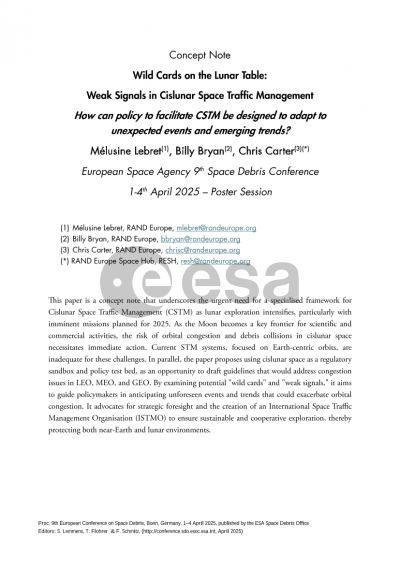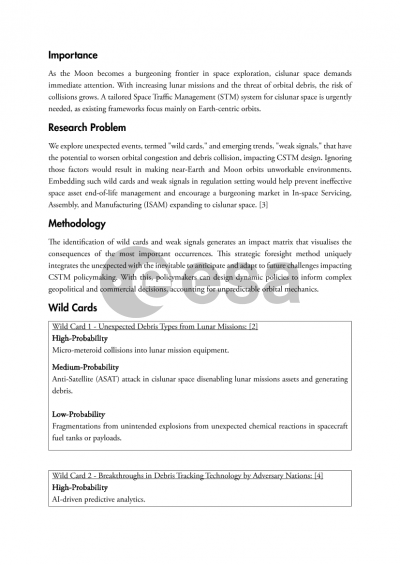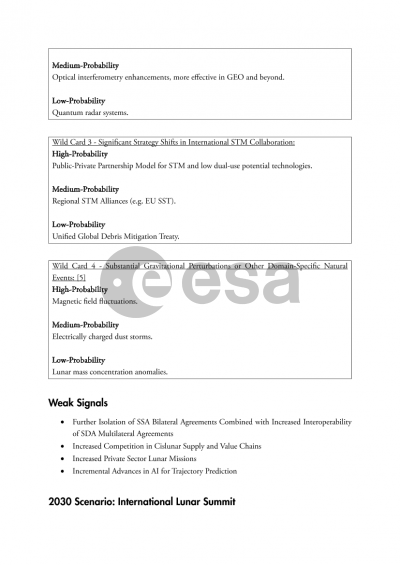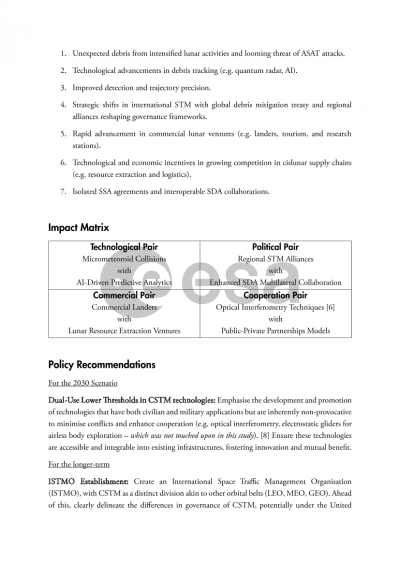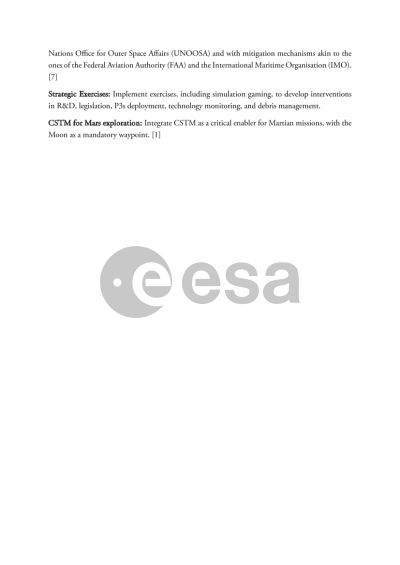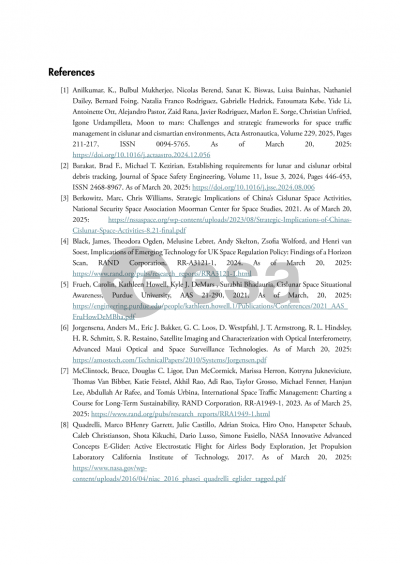Document details
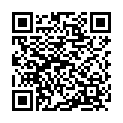
Abstract
Introduction: Increasing lunar missions and orbital debris has heightened the risk of collisions in cislunar space. A coordinated space traffic management (STM) system of cislunar space is needed to help avoid such collisions, however, current international STM systems, including debris tracking and collision avoidance, are primarily focused on Earth-centric orbits. The extension of these systems to cislunar space presents unique scientific and technological (S&T) challenges, combined with unpredictable policy, environmental, legal and economic events that cislunar STM (CSTM) designers must account for.
Research Problem: This study aims to answer: “How can policy to facilitate CSTM be designed to adapt to unexpected events and emerging trends?”. We explore unexpected events, termed "wild cards," and emerging trends, "weak signals," that have the potential to worsen orbital congestion and debris collision, impacting CSTM design. Ignoring those factors would result in making near-Earth and Moon orbits unworkable environments. Embedding such wild cards and weak signals in regulation setting would help prevent ineffective space asset end-of-life management and encourage a burgeoning market in In-space Servicing, Assembly, and Manufacturing (ISAM).
Methodology: The identification of wild cards and weak signals will allow to generate an impact matrix that visualises their interactions, and the impact of those. This strategic foresight method uniquely integrates the unexpected with the inevitable to anticipate and adapt to future challenges impacting CSTM policymaking. By analysing the relationships between cards and signals in the squared impact matrix, policymakers can design dynamic policies to inform complex geopolitical and commercial decisions, accounting for unpredictable orbital mechanics.
Potential wild cards: (1) Unexpected debris types from lunar missions (e.g. ASAT attack in cislunar space) (2) Breakthroughs in debris tracking technology by adversary nations (e.g. efficient tracking through quantum mechanics) (3) Significant strategy shifts in international STM collaboration (e.g. revoking of Space Policy Directive 3 STM pillar) (4) Substantial gravitational perturbations or other domain-specific natural event (e.g. mispredictions by the Circular Restricted Three Body Problem).
Emerging weak signals: (1) Increased private sector lunar missions (2) Incremental advances in AI for trajectory prediction (3) Increased competition in cislunar supply and value chains (4) Further isolation of Space Situational Awareness (SSA) bilateral agreements combined with increased interoperability of Space Domain Awareness (SDA) multilateral agreements.
Cards and signals are then categorised into technological, policy, environmental, and economic types.
Results: A cross-impact analysis evaluates how CSTM signals and cards across different categories relate to eachother. This analysis then involves estimating probabilities of interaction between signals and cards, accompanied by a risk assessment. By developing corresponding scenarios that incorporate wild cards and weak signals, the study culminates in an impact matrix that highlights those interactions, and their impact.
Conclusion: CSTM implications are drawn from the impact matrix that identifies which critical combinations of events and trends should be considered in current policy frameworks, allowing to maintain a forward-thinking approach adaptable to the evolving landscape of CSTM. By integrating out-of-the-box technological, policy, environmental, and economic factors, this research offers a holistic perspective on managing the risks associated with the increasingly congested cislunar environment.
Preview
